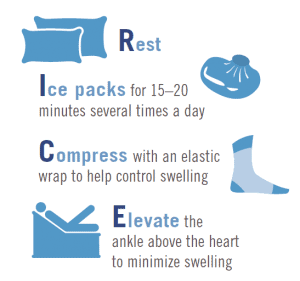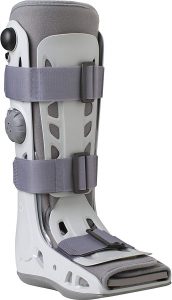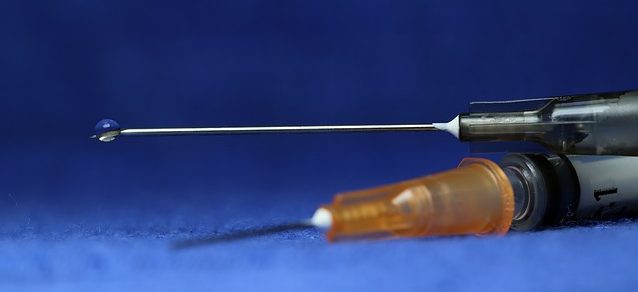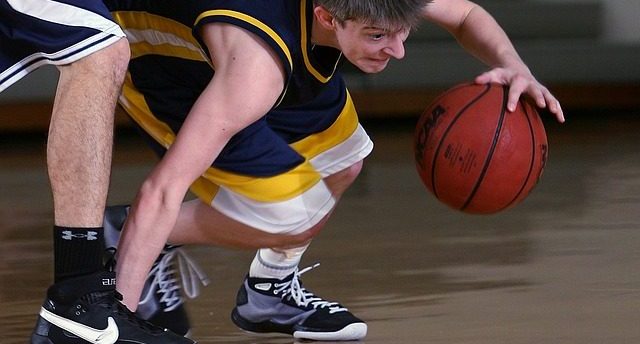Do you know the difference between Plantar Fasciitis and a Plantar Fascia Rupture?
There are many different types of foot pain and it can be overwhelming trying to decipher what you may have, based on the symptoms you have entered into Dr Google.
Here we will address both conditions and the differences between them. Hopefully the information provided will allow you to be a little more informed to decide whether you are indeed suffering from Plantar Fasciitis or a Plantar Fascia Rupture.
What is Plantar Fasciitiis?
Plantar Fasciitis occurs when the Plantar Fascia ligamnent that runs along the underside of the foot to help support the arch, becomes damaged and inflamed.
The type of damage typical of Plantar Fasciitis is microtears within the tissue that are caused by overstretching of the plantar fascia.
It is typical for a person with Plantar Fasciitis to feel the most pain when they first stand and put their full weight onto the affected foot first thing in the morning after a nights sleep. It can also be felt, although to a lesser degree if the person has been sat resting for a period of time.
The pain associated with Plantar Fasciitis can start off as nothing more than a minor discomfort, however, left untreated the condition can become very painful over time. No matter the severity of the pain, it still only lasts a few minutes during the first stages of walking after rest and then reduces dramatically or disappears all together until the sufferer rests. They will find that once they are active again, the cycle will repeat itself.
What is a Plantar Fascia Rupture?
A Plantar Fascia Rupture is a much more severe condition and the effects are instant.
When the Plantar Fascia ligament is placed under more strain than it can handle, it tears significantly or even snaps completely. This means that the arch of the foot is no longer supported and the sufferer cannot put weight onto the affected foot.
The pain felt is instant and acute and somtimes the sufferer will feel a ‘popping’ sensation when the ligament snaps. The area around the break will become bruised and tender.
Athletes that spend alot of time jumping, such as basketball players, are especially prone to dealing with a ruptured Plantar Fascia.
Are Plantar Fasciitis and a Plantar Fascia Rupture Treated the Same Way?
The short answer is No.
However things are not as straight forward as that.
With a Plantar Fascia rupture, the person is usually unable to put any weight onto the affected foot. They will be required to rest the foot completely for at least a couple of weeks and then will be required to walk with a crutch or cane to keep their weight off of the foot for several months. They will also be required to wear a foot brace for a period of time.
Once the rupture has started to heal (usually 8 – 12 weeks), and they are able to once again put weight onto the foot, then they will follow a similar recovery program as a person who is suffering from severe Plantar Fasciitis.
Some sufferers may need the help of a Physiotherapist to regain the strength and mobility. In rare cases, injections or possibly surgery, may also be required to repair the broken planatar fascia.
Treatment of Plantar Fasciitis
The most effective treatment of Plantar Fasciitis is rest and time.
The most important aspect of the recovery is to prevent further damage from happening to the Plantar Fascia ligament, and to allow the existing damage the time to fully heal.
People who suffer from Plantar Fasciitis complain that the condition seems to last for months, and in some cases years. However, these same people usually do very little to actively address the problem, and prefer to live in the hope that it will somehow cure itself, or miracurously just dissapear one day. This leads them to dealing with a worstening condition that lasts a lot longer than it really needs to.
Read about the Continuous Cycle of Plantar Fasciitis Pain here.
Treatment of a Plantar Fascia Rupture
As mentioned earlier, a person with Plantar Fasciitis can live with the pain and discomfort of the condition for weeks or months without seeking help or solutions.
A person who experiences a Plantar Fascia Rupture has no such luxury. The pain and effect is immediate and debilitating.
A sufferer will not be able to put any weight onto the affected foot for several weeks and will need the assistance of a crutch or orthotic boot to help immobilize and protect the foot.
Here is the likely treatment plan that you will follow should you encounter a Plantar Fascia Rupture.
Immediate Treatment of a Ruptured Plantar Fascia – R.I.C.E
Upon significantly tearing or snapping your Plantar Fascia, it is imperritive that you take immediat action to reduce the swelling and inflammation to the injury. The most common protocol followed is the acronym RICE.

REST
You must not place any weight onto the injured foot for a minimum of 48 hours to prevent further injury and reduce the level of bruising.
ICE
Apply an ice pack to the injury for 15 minutes, every hour for the first 24 hours to reduce swelling and help aleviate the pain. Be sure to wrap the ice pack in a towel to prevent the ice coming in direct contact with the skin and causing possible ice burn or frostbite. If you don’t have an ice pack, then a bag of frozen peas or something similar will work just as well.
COMPRESSION
You will need to apply some kind of compression, such as an elastic bandage, to immobilize the injury and help prevent swelling. The bandage needs to be snug but not so tight that it interupts blood flow. If the bandaged area starts to turn blue, feel numb or tingly, then the bandage will need to be slighlty loosened.
ELEVATION
The injury will need to be raised above the heart to help reduce the bruising and throbbing. For a ruptured plantar fascia, it can be as simple as propping the injured foot on some cushions to raise the level. The foot should remain elevated whenever possible during the first 24 hours but can be lowered to enable the application of the ice pack.
Ongoing Treatment for a Ruptured Plantar Fascia
Continued Rest
As previously stated, a Plantar Fascia Rupture is much more serious than Plantar Fasciitis and immediate rest is required to start the healing process. The sufferer will most certainly be advised to avoid attempting to put any weight on the foot for a minimum of a 3 – 6 weeks. After the initial rest period, you will likiely need to wear an orthotic type walking boot and possibly use a crutch or cane to allow you to walk without putting your weight onto the foot. The walking boot may be required to be worn for a further 2 – 3 months depending on the severity of your inhury and how quickly it is healing.

Immobilization
The ruptured foot will need to be immobilized to prevent further damage and promote healing. Along with the walking boot, a compression sock may be advised to be worn. In some serious cases, your health care practitioner may prefer the foot to be placed in a cast.

Gentle Stretching & Strengthening Exercises
After a few weeks of completely resting the injured foot, the plantar fascia tissues will have started to reconnect and you may be able to attempt some gentle stretching exercises. If you find that you are now able to start putting a little weight onto the foot, then you may be ready to proceed with a gentle course of stetching and strengthening exercises. It is vital that you begin very cautiously to prevent a relapse in the healing. PAIN is the bodies way of telling you that you are exceeding your limits and in this case it is best to listen.
Physio Therapy
Injuries where you have suffered a complete rupture (the plantar fascia has snapped completely as opposed to being torn), you will probably be advised to seek the advice of a physio therapist to recieve a complete exercise plan based around your own condition. Equally, some patients with a torn plantar fascia will take it upon themselves to visit a physio therapist or sports therapist for one or two sessions to be shown how to do the exercises correctly and safely. They will then continue with the exercises in their own home.
Strengthening the Plantar Fascia
After several weeks, the ruptured plantar fascia will have repaired itself to a degree that you will be able to get back to your normal daily routine without the need for a walking boot or crutch. This does not mean that you can start back to running 10 miles a day or playing basketball as though the rupture never happened. You have to understand that the plantar fascia will still be in a weakened state and vulnerable to reinjury if you try to run before you can walk – literally!
Once you feel that you can walk fairly comfortably, albeit with the aid of some orthotic aid, then you can start to gently introduce exercises to strengthen the plantar fascia. As with the earlier advice, it is best to take this cautiously and listen to what your body is telling you. If you start to feel pain or discomfort in the area of your injury, then it is likely you are trying to do more than you are ready for. Ease back on the intensity and allow the foot to heal at its own pace.
Plantar Fascia Injections
In some of the more severe cases of Plantar Fasciitis and ruptures, injections may be suggested. Patients that are experiencing moderate to high pain, or perhaps haven’t responded to treatment as well as expected, may be asked to consider this option.
There are several kinds of injections available and your doctor would discuss with you the preferred method to suit your individual circumstances.
Below is a brief explannation about some of the more common injections being used in these cases.

Cortisone / Steroid Injections
This injection is usually offered to people suffering pain with plantar fasciitis. The injection will reduce the inflammation pain, but is not without its drawbacks.
The steroid could potentially weaken the plantar fascia tissue, leading to a more likelyhood of a tear or rupture. It could also break down the foot pads on the sole of the foot, leading to further risk of complications.
Due to these possible risks, patients that have this type of injection are encouraged to seek medical advice prior to doing any plantar fascia stretches or exercises, after receiving the injection.
Learn more about Cortisone Injections and the potential risks in our in depth article here
Platelet Rich Plasma (PRP) Injections
This type of injection requires the patient to give blood. The platelet rich plasma is removed from the blood and injected directly into the injury site of the plantar fascia. Blood platelets are the bodies natural healing molecules that allow our body to heal itself from minor injuries. Once the PRP has been injected into the injury site, it will get to work repairing the damage in the area. Some patients may benefit from a singular injection, however it is not uncommon for a series of several PRP injections to be given.
Prolotherapy Injections
This procedure involves injecting an irritant (usually a dextrose solution) into the injury site to promote healing. The irritant kick starts the bodies natural healing process and helps to regenerate the damaged tissues within the plantar fascia. The patient will likely recieve several injections within a session, and may require several sessions over the course of a few months.
Plantar Fascia Orthotic Aids
Once your Plantar Fascia is on the mend, you should be able to start putting weight onto the foot again. You will probably be advised to wear some kind of orthotic aid to help reduce the stress on your plantar fascia whilst it is recovering. There are many different aids that you can choose from depending on the nature of your injury. Your Doctor or Physio Therapist will be able to advise you on the type of aid that would be suitable for your particular condition.
To begin with, you are just as well buying the over the counter aids, and seeing how you progress. In some instances you may need to have custom made orthotics, but again, you will be advised on this by the person in charge of your treatment.
Our resources page shows some of the different types of orthotic aids that are on the market.
Up to 12 Months for full recovery from Plantar Fascia Rupture
Although you may be back up on your feet within 3 – 4 months, the combined time for you to reach a full recovery could be as long as 12 months. However, depending on the lifestyle you led prior to the injury, will impact on your recovery time. Athletes that are fit and active and carrying very little extra weight, will likely heal quicker than an inactive overweight person would. Equally, a younger persons body has the ability to heal much faster than an elderly person.
Conclusion
As you can see from the information presented above, dealing with severe Plantar Fasciitis or a Plantar Fascia Rupture is not a straight forward or even quick recovery process.
Every individual will respond to treatment differently, just as their rate of recovery will differ.
Your general health and fitness will play a part in the recovery time, as will your own commitment to doing the necessary exercises and stretches required to strengthen the affected plantar fascia. Equally your ability to be patient and not to rush or overdo the exercises too soon, will also be a factor.
The underlying factor with all of the treatment methods boils down to needing REST and TIME. You have to allow your body the time to heal itself and give the injury a rest from any weight bearing or stress.
Finally – Address the initial problem
Your plantar fasciitis or rupture has been caused for a reason. It is imperitive that you get to the root cause of the problem or you may face yourself in the same situation again in the not too distant future.






2 Comments
Pingback:
Pingback: